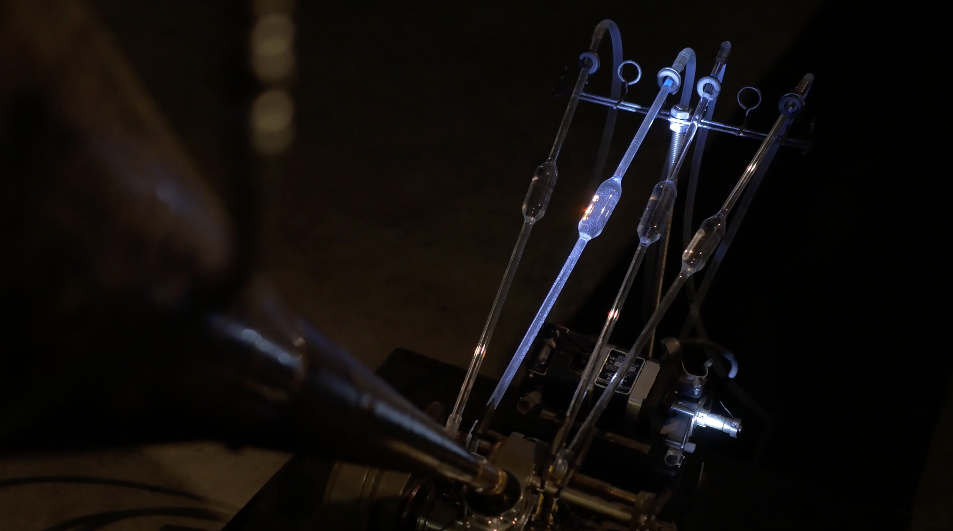 Sound can be assumed by its transformative properties and processes, as a form of alchemy, a transmutation both tangible and intangible, psychic and physical, where every echo or object is processed in terms of its most primal roots, in terms of deep relationships within nature’s elements. In that way, resonance and materiality configure universes, which no longer have to choose between fixed states, but rather stay open to the processes that arise in-between, as a poetic interstice of sonic existence.
Sound can be assumed by its transformative properties and processes, as a form of alchemy, a transmutation both tangible and intangible, psychic and physical, where every echo or object is processed in terms of its most primal roots, in terms of deep relationships within nature’s elements. In that way, resonance and materiality configure universes, which no longer have to choose between fixed states, but rather stay open to the processes that arise in-between, as a poetic interstice of sonic existence.
Directed by the artists Navid Navab, and Michael Montanaro, Aquaphoneia is an interesting installation debutant Ars Electronica 2016: Alchemists of our Time, in which those vibrant process get explored, allowing time and matter to converge in a transmutation of sonic signals; waves and corpuscles between the liquidity of sound and the sound through liquids.
Aquaphoneia unfolds in the convergence of various technologies, both contemporary and ancient, exploring light, sound and matter through a series of machines whose design and operation roams between recording devices, sound processors, and devices you would easily find in a chemistry laboratory. Such interaction between substance and vanishment of voices appears in a bidirectional process, where the material affects the sonic and vice versa, resulting in processes that seem so typical of a single side, but actually becomes an exploration of each other.
In that way matter and sound come to share a series of an interesting cosmological issues, from granulation to evaporation, among filtering and reactions of all kinds. Calcination, transmutation, release, condensation in different layers of spacetime. Several processes of transformation revealing a point where the material sounds and the sonic materializes in its own set of entities, fluid, temporary, drawn between aesthetic and mechanical forms, under a single principle of oscillation, continuous, interdependent, as an ouroboros.

“A large horn floating mid space echoes the ghosts of Edison, Bell, and Berliner’s machines. But unlike early recording, herding sound energy to etch pressure patterns in solid matter, this odd assemblage transmutes voice into water and water into air. Disembodied voices abandon their sources to cross the event horizon of the horn. Estranged, the schizophone falls into the narrow depths of the bell, squeezed into spatiotemporal infinity, calcinated, liquefied and released: the aqueous voice then flows into three alchemical chambers where inner time is surrendered to the tempi of matter: unbound, yet lucid and sound.
In one corner, voices bubbling inside a sphere of fire are brought to entropy and transmuted into a timeless concentration of spectral mist and phonetic vapor.
An ouroboros chamber twists fermented vowels into distilled consonants to release a thin blade of prosody. This viscous alchemical matter lowers itself to the terra beneath, where matter dances to its own affective tonality.
Another module separates speech into vital elements a drop at a time: words into phonemes, into phono particles, and the invisible quanta of silence.”





